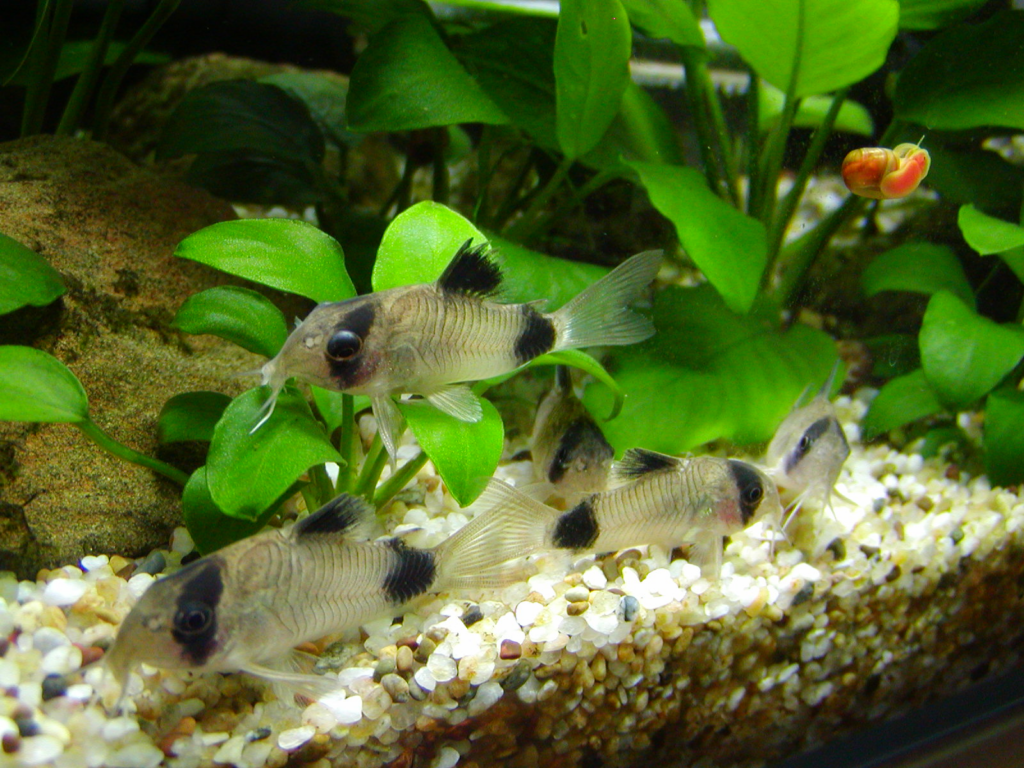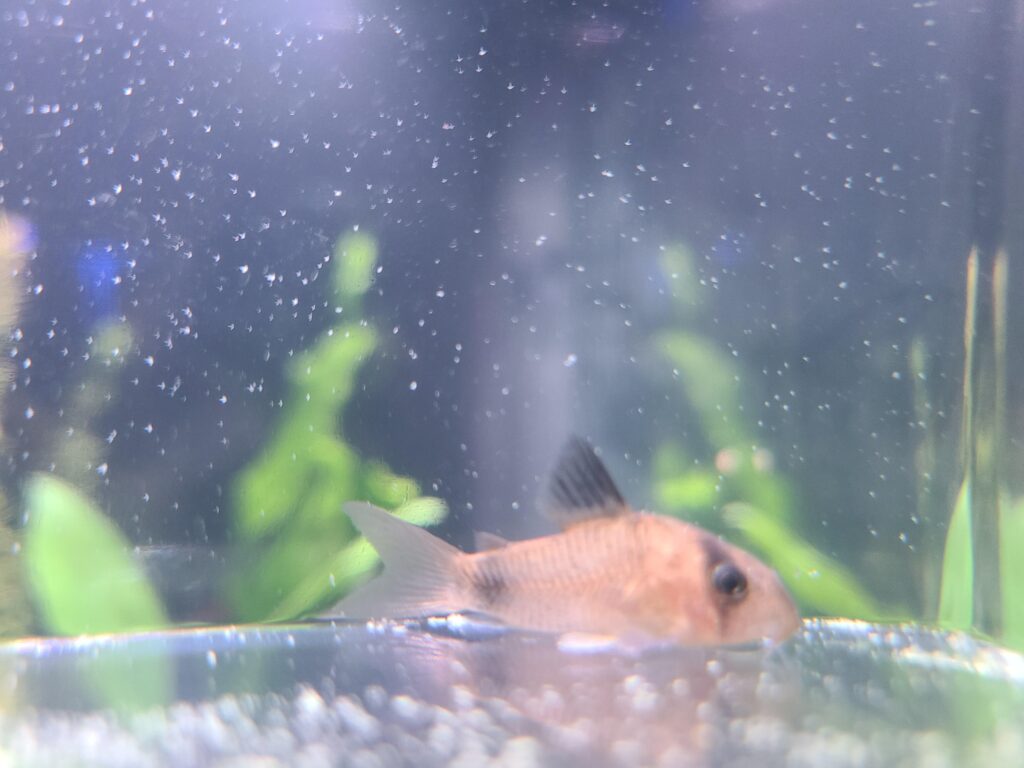If you’re an aquarium enthusiast looking to add a new fish to your collection, you might have come across the Panda Corydoras. These charming little catfish are popular among fish keepers for their peaceful nature and striking appearance. But one question that often comes up is, are Panda Corydoras hardy?

Understanding the hardiness of a fish breed is crucial before bringing them into your aquarium.
You want to ensure that they can thrive in their new environment and withstand the challenges that may come their way.
Let’s delve into the world of Panda Corydoras and explore their hardiness.
Understanding Panda Corydoras
Panda Corydoras, also known as Panda Cory Catfish, are small and peaceful fish native to the Amazon Basin in South America.
They feature a black and white coloration pattern, resembling that of a giant panda, which adds a touch of uniqueness to any aquarium.
In their natural habitat, Panda Corydoras inhabit slow-moving rivers and tributaries that are rich in vegetation.
They are known for their social behavior and are typically found in schools. This makes them an ideal choice for community aquariums.
One of the key characteristics that make Panda Corydoras popular among fish enthusiasts is their peaceful nature.
They are compatible with most adult dwarf shrimp and other invertebrates, creating a harmonious environment within the aquarium.

Which Corys are the Hardiest?
In the world of cory species, Bronze Corys and Corydoras Sterbai stand out as the hardiest options, often recommended for their resilience.
These fish are adaptable to various water conditions, making them a great choice for both new and seasoned aquarists.
While Panda Corys are known for their charming appearance, they are not as hardy as other cory species like the Bronze Corys.
Understanding the differences between Panda Cories and other cory species helps in creating a successful community tank.
Additionally, using a quarantine tank before adding new fish to the aquarium is a good practice to maintain the health of the fish and other species.

Factors that Determine Hardy Fish Breeds
When assessing the hardiness of a fish breed, several factors come into play. These factors contribute to the fish’s ability to adapt and survive in different environments. Let’s explore some of these factors:
Water requirements and temperature tolerance
Hardy fish breeds like the Panda Corydoras can tolerate a wide range of water conditions. They are adaptable to variations in pH levels and temperature, making them more resilient to changes in the aquarium environment.
Compatibility with other fish species
Hardy fish breeds are often able to coexist peacefully with other fish species. This is crucial in maintaining a well-balanced community aquarium where aggression and territorial disputes are minimized.
Ability to adapt to different environments
Some fish are better equipped to handle changes in their surroundings. Hardy fish breeds like the Panda Corydoras have evolved mechanisms to adapt to diverse aquatic habitats, making them more capable of thriving in different conditions.

Assessing the Hardiness of Panda Corydoras
So, how hardy are Panda Corydoras? These catfish are known for their remarkable ability to adapt to various water conditions.
In their natural habitat, they experience fluctuations in pH levels and temperature, and they have developed mechanisms to handle such changes.
When kept in a well-maintained aquarium, Panda Corydoras should thrive.
They can tolerate water temperatures between 72°F (22°C) and 78°F (26°C) and a pH range between 6.0 and 7.5.
It’s important to note that sudden and extreme changes in water parameters should still be avoided to ensure the health and well-being of these fish.
Additionally, Panda Corydoras’ peaceful nature makes them compatible with a wide variety of fish species.
They will typically not engage in aggressive behavior or disturb their tank mates, promoting a harmonious community environment.

Practical Tips for Keeping Panda Corydoras
If you’re considering adding Panda Corydoras to your aquarium, here are some practical tips for creating an ideal environment for them:
1. Set up a well-planted aquarium with hiding spots: Panda Corydoras appreciate a tank with plenty of live plants and hiding spots, mirroring their natural habitat.
This will provide them with security and promote their overall well-being.
2. Ensure proper water parameters: Maintain a water temperature between 72°F (22°C) and 78°F (26°C) and a pH level between 6.0 and 7.5.
Regularly monitor ammonia, nitrite, and nitrate levels and conduct necessary water changes to keep the aquarium clean and healthy.
3. Select suitable tank mates: Consider choosing peaceful fish species that won’t engage in aggressive behavior towards the Panda Corydoras.
Good tank mates include other peaceful community fish like tetras, rasboras, and livebearers.
Are Panda Corys Good for Beginners?
Panda Corys, often referred to as Panda Cories, are highly favored in the aquarium trade due to their peaceful nature and attractive appearance.
These pandas are a top choice for beginners because they are easy to care for and are excellent schooling fish that thrive in a community tank.
Although they are one of the more delicate cory species, their needs are simple compared to other corys.
When introducing new fish, using a quarantine tank is recommended to prevent any potential spread of disease to other species in the tank.
Other Considerations for Panda Corydoras Owners

In addition to understanding the hardiness of Panda Corydoras, there are a few other aspects to consider when keeping these charming catfish:
Feeding habits and dietary requirements
Panda Corydoras are omnivorous and will readily eat a variety of foods. Provide them with a balanced diet that includes high-quality fish pellets, flakes, and occasional live or frozen foods like brine shrimp or bloodworms.
Common health issues and preventive measures
Like any fish, Panda Corydoras can be susceptible to certain health issues, including ich and bacterial infections.
Proper water maintenance, regular monitoring, and a balanced diet can help prevent such issues.
Quarantining new fish additions before introducing them to the main tank can also reduce the risk of diseases spreading.
Breeding and reproduction
If you’re interested in breeding Panda Corydoras, provide them with suitable breeding conditions such as slightly warmer water and plenty of hiding spots.
They are egg layers and will deposit their eggs in hidden areas. Breeding them can be a rewarding experience for dedicated fish keepers.
Conclusion
In conclusion, Panda Corydoras are considered hardy fish due to their ability to adapt to varying water conditions and their peaceful nature.
With the right care and an ideal tank setup, they can bring joy and beauty to your community aquarium.
So, if you’re looking for a peaceful and visually striking addition to your aquarium, the Panda Corydoras might just be the perfect choice.


